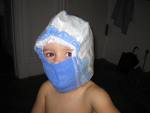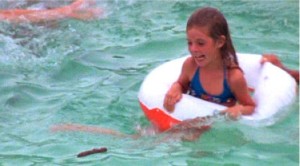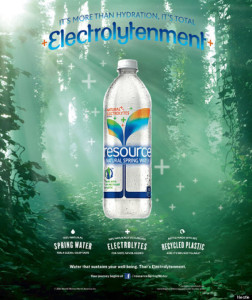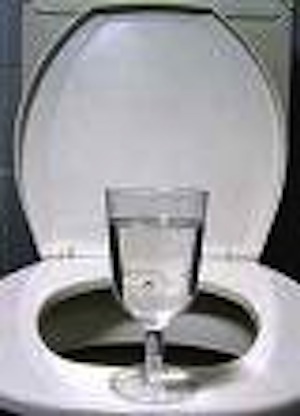Water is sortofa big thing in agriculture.
For the past 15 years I’ve had lively chats with growers of fresh produce about the quality of irrigation water. When the E. coli O157:H7 outbreak happened in  Walkerton, Ontario, 13 years ago, those discussions became more heated.
Walkerton, Ontario, 13 years ago, those discussions became more heated.
My farmer friend Jeff wanted to know more and wanted to know what he could do because, as he said all those years ago, if a farmer has to choice between using potentially crap water or losing a crop, they’ll use the potentially crap water.
Things haven’t progressed much in the way of interventions, other than don’t bathe fresh produce in cow poop.
But under the Food Safety Modernization Act, growers in the Idaho-Eastern Oregon onion growing region, the nation’s largest in terms of volume, worry the rules will threaten their livelihood.
Growers say almost none of the surface water will meet the new standards.
And the science continues to be continuously vague.
Pahl et al reported in the Journal of Food Protection this month there was little correlation between indicator pathogens in water and indicator pathogens on tomatoes; maybe they didn’t stick.
Won et al reached similar conclusions in the same issue of JFP.
So how does this science feed into produce policy?
Comparing source of agricultural contact water and the presence of fecal indicator organisms on the surface of ‘juliet’ grape tomatoes
Journal of Food Protection,Number 6, June 2013, pp. 928-1108 , pp. 967-974(8)
Pahl, Donna M.; Telias, Adriana; Newell, Michael; Ottesen, Andrea R.; Walsh, Christopher S.http://www.ingentaconnect.com/content/iafp/jfp/2013/00000076/00000006/art00007
Abstract:
Consumption of fresh tomatoes (Solanum lycopersicum) has been implicated as the cause of several foodborne illness outbreaks in the United States, most notably in cases of salmonellosis. How the levels of fecal indicator organisms (FIOs) in water relate to the counts of these microorganisms on the tomato fruit surface is unknown, although microbial water quality standards exist for  agricultural use. This study utilized four types of FIOs currently and historically used in microbial water quality standards (Enterobacteriaceae, total coliforms, fecal coliforms, and Escherichia coli) to monitor the water quality of two surface ponds and a groundwater source. The groundwater tested contained significantly lower counts of all FIOs than the two surface water sources (P < 0.05). Considerable variability in bacterial counts was found in the surface water sources over the course of the season, perhaps explained by environmental variables, such as water temperature, pH, precipitation, and air temperature (R2 of 0.13 to 0.27). We also monitored the fruit surface of grape tomatoes treated with overhead applications of the different water sources over the 2009 and 2010 growing seasons. The type of water source and time of year significantly affected the populations of FIOs in irrigation water (P < 0.05). Despite up to 5-log differences in fecal coliforms and 3-log differences in E. coli between the water sources, there was little difference in the populations measured in washes taken from tomato fruits. This lack of association between the aforementioned FIOs present in the water samples and on the tomato fruit surface demonstrates the difficulty in developing reliable metrics needed for testing of agricultural water to ensure the effectiveness of food safety programs.
agricultural use. This study utilized four types of FIOs currently and historically used in microbial water quality standards (Enterobacteriaceae, total coliforms, fecal coliforms, and Escherichia coli) to monitor the water quality of two surface ponds and a groundwater source. The groundwater tested contained significantly lower counts of all FIOs than the two surface water sources (P < 0.05). Considerable variability in bacterial counts was found in the surface water sources over the course of the season, perhaps explained by environmental variables, such as water temperature, pH, precipitation, and air temperature (R2 of 0.13 to 0.27). We also monitored the fruit surface of grape tomatoes treated with overhead applications of the different water sources over the 2009 and 2010 growing seasons. The type of water source and time of year significantly affected the populations of FIOs in irrigation water (P < 0.05). Despite up to 5-log differences in fecal coliforms and 3-log differences in E. coli between the water sources, there was little difference in the populations measured in washes taken from tomato fruits. This lack of association between the aforementioned FIOs present in the water samples and on the tomato fruit surface demonstrates the difficulty in developing reliable metrics needed for testing of agricultural water to ensure the effectiveness of food safety programs.
Absence of direct association between coliforms and Escherichia coli in irrigation water and on produce
Journal of Food Protection, Number 6, June 2013, pp. 928-1108 , pp. 959-966(8)
Won, Gayeon; Schlegel, Pamela J.; Schrock, Jennifer M.; LeJeune, Jeffrey T.
http://www.ingentaconnect.com/content/iafp/jfp/2013/00000076/00000006/art00006
Abstract:
Irrigation water is considered a potential source of preharvest pathogen contamination of vegetables. Hence, several organizations have recommended microbiological standards for water used to irrigate edible plants. The purpose of this study was to determine the strength of association between microbial quality indicators (coliforms and Escherichia coli) in irrigation water and on irrigated vegetables. Data analyzed included original results from a cross-sectional study conducted in the Midwestern United States during summer 2009 and information presented in two previously published studies performed in France and Portugal to investigate microbial quality of irrigation water and watered produce. In the cross-sectional study, repetitive PCR (rep-PCR) was used to characterize genetic relatedness of E. coli isolates from water and vegetables. No significant correlations were found between fecal indicators on leafy greens (lettuce and parsley, n = 91) or fruit (tomatoes and green peppers, n = 22) and those found in irrigation water used in the cross-sectional study (P > 0.40) or in the previously published data sets (data set 1: lettuce and waste irrigation water, n = 15, P > 0.40; data set 2: lettuce and irrigation water, n = 32, P = 0.06). Rep-PCR banding patterns of E. coli strains were all distinguishable among the pairs of E. coli isolates recovered from produce and irrigation water on the same farm. From the available data, the concentration of indicator organisms based on a single measure of irrigation water quality was not associated with the presence of these indicators on produce. In the absence of additional information, the use of a single microbial water quality parameter as an indicator of produce safety is of limited value for predicting the safety of the produce.
 from the nearby River Calder to cool off.
from the nearby River Calder to cool off.










